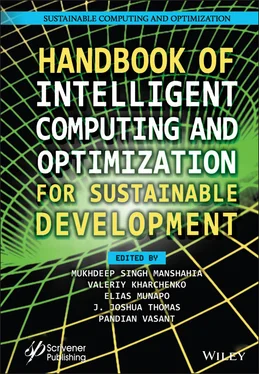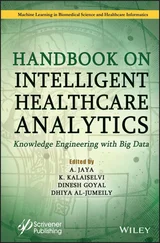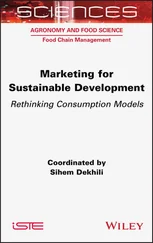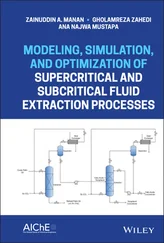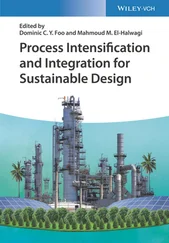Chapter 27presents the three-diode model-based PV module. The Harris hawks’ optimization (HHO) algorithm is used to estimate all the nine parameters of the system for three types of commercially available PV modules; namely, KC200GT multi-crystal, CS6K-280M mono-crystalline, STM6 40-36 mono-crystalline, Pro. SW255 poly-crystalline. The competitive and statistical experimental results show that HHO is advantageous in the sense that the sum of square error is lower as compared to that with other wellknown algorithms. The suggested technique also exhibits better convergence than the salp swarm algorithm (SSA), grey wolf optimizer (GWO), sine cosine algorithm (SCA), and dragonfly algorithm (DA).
Part IV: Sustainable Computing
Chapter 28proposes a probability density function (PDF) optimized quantization (OQ) scheme for decision statistics at secondary user (SU) nodes to reduce communication overhead through the control channel in IoT cognitive radio network. A proposed approach was evaluated using software defined radio (SDR) setup consisting of RTL-SDR and Raspberry Pi (RPI). Using real-world signal, the proposed quantization strategy was tested with traditional soft-fusion, K-means clustering (KMC) and support vector machine (SVM)-based classifiers at the fusion center (FC). The results show a significant savings in bit requirement at FC to obtain an equivalent performance in comparison to similar schemes in the literature.
Chapter 29describes recent advancements in energy-saving practices and strategies for achieving a strong vision of green IoT-enabled smart farming coupled with machine learning provided with prediction intelligence. A G-IoT prototype is formulated using machine learning to determine the outline of irrigation conditional nonlinear weather changes. The core aspect of this review article consists of surveys and discussions of the vital topics in green IoT-based smart farming and their enabler technologies.
Chapter 30proposes a disseminated equal preparation structure for online content examination to proficiently deal with vast amounts of information. This model speaks to semantic content rundown from electronic information with the assistance of a frequent pattern tree and semantic metaphysics by utilizing the space information semantic. Here, MapReduce structure is utilized as information and text information is spoken of as slant term grid with numerical qualities. Results are provided to establish the proposed efficient sentiment analysis method. This method is capable of handling large web-based data efficiently and also performs well for handling synonyms.
Chapter 31devises a three-phase system using fuzzy logic for node deployment and inter-node data transmission using the A* algorithm for analyzing crop-related data in precision farming. The model shows faster data coverage with fewer iterations than existing models along with a cost-effective optimized deployment strategy, which will help users save money and have access to proper real-time data. The result analysis is shown in accordance with the real-time deployment scheme.
Chapter 32focuses on smart and precise agriculture to achieve better crop yields. The authors include several essential categories of the agricultural domain and highlight the importance of every category. Many different technologies are implemented to enhance crop yield, food security and ease of work. Artificial intelligence, internet of things, and robotics are discussed. These technologies help farmers at every crop stage—from showing to harvesting the crop, from packing to transportation. Artificial intelligence helps farmers utilize assets more economically and get fair use of farmland.
Chapter 33discusses the developing needs of both academicians and professionals for understanding the relationship of various sustainable green initiatives, advanced manufacturing techniques, maintenance techniques and performance attributes. In this admiration, notwithstanding exhibiting the most recent understanding of the present status of the impact of four capacities on execution of vehicles organizations, it has valuable ramifications for managers with respect to the technique development.
Part V: AI in Healthcare
Chapter 34utilizes the Bayesian paradigm in understanding the association between the gender and lipid profile among coronary artery disease (CAD) patients and compares the results with classical approaches. The research is based on the secondary analysis of data (n=1045) from a National Health and Nutrition Examination Survey (NHANES) (2015–2016) of individuals older than 50 years in which measures of the lipid profile were available. The clinical diagnosis of CAD was positive in 91 individuals. The comparison of differences in the lipid profiles across gender was performed under the classical (independent sample t-test) and Bayesian paradigm. Males positive for CAD were younger (54-80) than females (57-80). The lipid parameters (total cholesterol, LDL, Direct HDL, non-HDL) differed significantly across gender under both paradigms, except for triglyceride and two ratios (TC:HDL, LDL:HDL). However, the Bayesian paradigm suggested differences even for triglycerides and TC:HDL ratio across gender. This clearly suggests that even when sample size is small, the Bayesian paradigm closely approximates our prior knowledge of lipid profile as the risk factor for CAD occurrence. The Bayesian paradigm unraveled the importance of clinical parameters (triglyceride and TC:HDL), which remained hidden under the classical t-test.
Chapter 35proposes an architecture of cascaded convolutional long short-term memory (ConvLSTM) that uses the idea of combining the patch-based dictionary learning approach for reconstruction of dynamic MRI. K-space data of T2-weighted dynamic MRI sequences obtained from ADNI database is undersampled for accelerating the acquisition process using Cartesian masks of different undersampling rates. Proposed architecture is later used to reconstruct this undersampled sequence. Results are compared with state-of-the-art 2-dimensional cascaded convolutional neural network (CNN)-based reconstruction for all standardmetrics. The proposed methodology is capable of preserving anatomical structure modality even after manifold undersampling.
Chapter 36presents a multispectral imaging-based gender classification with images collected in nine narrow spectrums across VIS and NIR spectrum. The authors also experimentally presented the comparative performance analysis study on gender classification using affine hull algorithm and wavelet averaging fusion. The experimental results are obtained on the multispectral facial database of 145 subjects corresponding to 78300 sample spectral band images. The extensive experimental results are carried out across six different illuminations using three different feature extraction methods for gender classification. The average classification obtained indicates the superiority of the wavelet fusion method over the affine hull subspace learning method in successfully extracting the unique characteristic information from spectral bands for improved performance.
Chapter 37analyzes the performance of various deep learning models for polyp detection. Various image enhancement techniques, such as max, min, sobel and canny filters, are applied to improve the performance efficiency of the training networks, which further helps to increase the rate of polyp detection. The concept of transfer learning and fine tuning is implemented to improve the efficiency of VGG16 and VGG19 deep neural networks. The system model is tested to detect polyps and the results of the system are described using different performance metrics like accuracy, loss, precision and recall. This work concludes that VGG19 deep neural networks are more suitable for polyp detection than other methods.
Читать дальше
